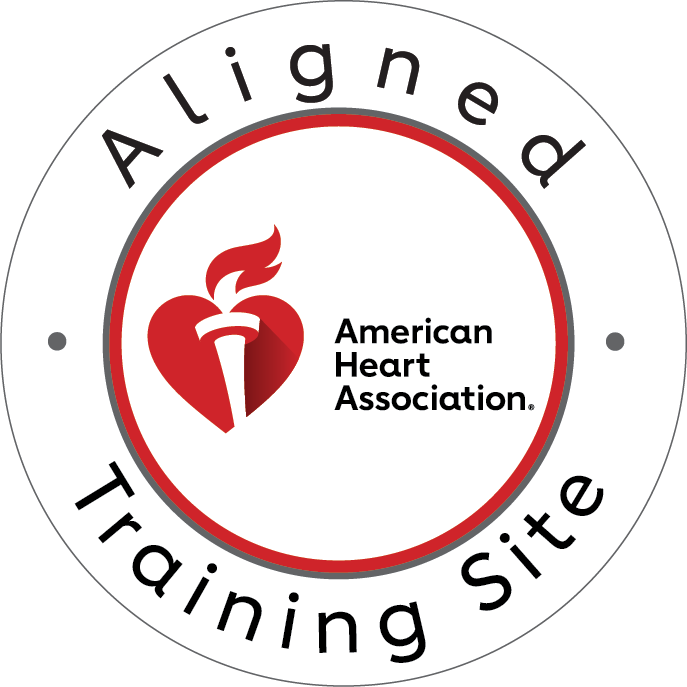I. Introduction
Cardiac arrest in infants is a rare but life-threatening emergency that requires immediate recognition and action. While it can be overwhelming to witness, knowing how to identify the signs of cardiac arrest can make the difference between life and death. Unlike adults, infants may not show obvious symptoms, making it essential for parents, caregivers, and anyone interacting with infants to be aware of the subtle cues.
This quick guide will walk you through the key signs to look for, how to respond if you suspect cardiac arrest, and the steps you can take to ensure the infant gets immediate help. Whether you’re a parent or someone who spends time around infants, learning to recognize and react to cardiac arrest is a crucial skill that can save lives.
II. Understanding Cardiac Arrest in Infants
Cardiac arrest occurs when the heart suddenly stops pumping blood, leading to a loss of oxygen to vital organs. Unlike a heart attack, which is caused by a blockage in the arteries, cardiac arrest is often the result of an electrical malfunction in the heart. In infants, cardiac arrest is frequently tied to respiratory issues, making it especially important to monitor breathing patterns.
Common Causes of Cardiac Arrest in Infants:
- Respiratory Failure: The most common cause in infants, often due to conditions like pneumonia, asthma, or choking.
- Congenital Heart Defects: Some infants are born with heart defects that may lead to cardiac arrest if not managed properly.
- Drowning: Infants can suffer cardiac arrest due to lack of oxygen after being submerged in water.
- Sudden Infant Death Syndrome (SIDS): While the exact cause is unknown, SIDS is often linked to cardiac or respiratory problems.
- Trauma: Severe injuries, particularly to the chest, can result in cardiac arrest.
Recognizing the underlying causes can help you remain vigilant, but the key is knowing how to quickly identify the symptoms and act fast.
III. Signs and Symptoms of Cardiac Arrest in Infants
Identifying cardiac arrest in infants can be challenging due to their small size and the subtle nature of the symptoms. Here’s how to recognize the critical signs:
1. Absence of Breathing
- What to Look For:
- Normal Breathing vs. Gasping: Check if the infant is breathing normally. Normal breathing is regular and effortless. Gasping, which may resemble irregular or shallow breaths, can indicate a severe problem.
- How to Check: Gently place your ear or cheek near the infant’s mouth and nose to feel for breath. Look at the rise and fall of the chest. If the infant is not breathing or only gasping intermittently, this is a significant sign of distress.
2. Loss of Consciousness
- What to Look For:
- Unresponsiveness: Gently tap the infant and call their name. If the infant does not respond to stimuli, it could be a sign of severe impairment or cardiac arrest.
- How to Assess: Carefully observe if the infant is limp or not moving. Unconsciousness in an infant means they are not waking up or reacting to external stimuli.
3. No Pulse
- What to Look For:
- Pulse Check Locations: In infants, the best place to check for a pulse is the brachial artery, located on the inside of the upper arm, between the shoulder and elbow.
- How to Check: Place two fingers on the inside of the upper arm and gently press to feel for a pulse. If you cannot detect a pulse within a few seconds, it is a critical sign that the heart may not be beating.
4. Skin Color and Appearance
- What to Look For:
- Pale, Bluish, or Mottled Skin: Check the infant’s skin color, especially around the lips, face, and extremities. A bluish or ashen tint, also known as cyanosis, indicates inadequate oxygen supply.
- How to Assess: Examine the infant’s skin for any color changes. Blueness around the mouth and fingertips or a dull, mottled appearance are indicators of a serious issue.
5. Limp Body
- What to Look For:
- Muscle Tone Changes: A lifeless or limp body is a significant sign of distress. If the infant’s body feels unusually flaccid and lacks muscle tone, it could be an indicator of cardiac arrest.
- How to Assess: Gently handle the infant and feel their muscle tone. If the body does not respond with normal firmness or if it feels unusually limp, immediate medical attention is required.
Recognizing these signs early can help you take swift action, potentially saving the infant’s life. Stay calm and proceed with the next steps to ensure the infant gets the necessary help as quickly as possible.
IV. How to Confirm Cardiac Arrest
When you suspect that an infant may be experiencing cardiac arrest, it’s crucial to confirm the situation before proceeding with emergency actions. Here’s a step-by-step method to quickly assess whether cardiac arrest is occurring:
1. Check Responsiveness
- How to Check: Gently tap or shake the infant and speak loudly to see if they respond. Use a firm, but gentle approach to avoid causing harm.
- Why It Matters: If the infant does not respond to verbal cues or physical stimulation, it is a strong indicator that they may be unconscious.
2. Assess Breathing
- How to Check: Place your ear or cheek near the infant’s mouth and nose to feel for breath. Look for chest movements to confirm if breathing is occurring.
- Why It Matters: The absence of regular breathing or only gasping breaths can confirm that the infant is in serious distress or cardiac arrest.
3. Check Pulse
- How to Check: Using two fingers, locate the brachial pulse on the inner upper arm. Press gently to feel for a heartbeat.
- Why It Matters: A lack of a detectable pulse within a few seconds indicates that the heart is not beating effectively, which is a sign of cardiac arrest.
4. Examine Skin Color
- How to Check: Observe the infant’s skin color, focusing on areas like the lips, face, and extremities. Look for any signs of bluish, pale, or mottled skin.
- Why It Matters: Changes in skin color can reflect severe oxygen deprivation and indicate the need for immediate intervention.
5. Evaluate Muscle Tone
- How to Check: Gently handle the infant to assess muscle tone. Feel if the body is unusually limp or floppy.
- Why It Matters: A limp body can signal a lack of circulation and muscle function, which are critical signs of cardiac arrest.
When to Assume Cardiac Arrest
If you find that the infant is unresponsive, not breathing, has no detectable pulse, and shows signs of abnormal skin color or muscle tone, it is reasonable to assume cardiac arrest. At this point, you should immediately proceed with emergency procedures.
Stay composed and act swiftly. Call emergency services right away, begin CPR if you are trained, and use an AED if available. Quick and effective action is crucial to improving the chances of survival and recovery.
V. Immediate Actions to Take
Once you’ve confirmed that an infant is experiencing cardiac arrest, taking immediate action is crucial. Here’s what you should do:
1. Call Emergency Services
- How to Call: Dial emergency services (such as 911) and provide clear information about the situation. Be specific about the infant’s condition and your location.
- What to Communicate: Clearly describe the symptoms you observed, such as unresponsiveness, absence of breathing, and lack of a pulse. Provide your exact address and any other relevant information to help emergency responders arrive quickly.
2. Begin CPR
- How to Perform CPR:
- Chest Compressions: Place two fingers in the center of the infant’s chest, just below the nipple line. Push down about 1.5 inches deep at a rate of 100-120 compressions per minute. Allow the chest to fully recoil between compressions.
- Rescue Breaths: After 30 compressions, give 2 rescue breaths. Ensure the infant’s airway is open by tilting the head back slightly and placing your mouth over the mouth and nose. Deliver each breath over 1 second, watching for the chest to rise.
- Why It Matters: Chest compressions help circulate blood throughout the body, while rescue breaths provide oxygen. This combined effort can help maintain circulation and oxygenation until emergency responders arrive.
3. Using an AED (Automated External Defibrillator)
- How to Use an AED:
- Turn on the AED: Follow the device’s prompts.
- Attach the Electrodes: Place the electrode pads on the infant’s chest as indicated by the AED’s diagrams. Typically, one pad goes on the front of the chest and the other on the back.
- Follow Instructions: The AED will analyze the heart rhythm and advise if a shock is needed. If a shock is recommended, ensure no one is touching the infant and press the button as directed.
- Why It Matters: An AED can help restore a normal heart rhythm if the heart is in a shockable rhythm. It’s an essential tool in cardiac emergencies, though it may not always be available for infants.
4. Continue to Monitor and Provide Care
- While Waiting for Help: Keep performing CPR and follow the AED’s instructions if used. Continue to monitor the infant’s condition and be prepared to provide additional information to emergency responders upon their arrival.
- Why It Matters: Continuous care and monitoring ensure that the infant remains as stable as possible until professional medical help arrives.
Taking these steps promptly and correctly can significantly impact the infant’s chances of survival. Ensure you remain calm and focused, and follow the steps diligently to provide the best possible care.
VI. Prevention Tips for Infant Cardiac Arrest
While immediate response is crucial, preventing cardiac arrest is equally important. Here are some practical tips to reduce the risk and keep infants safe:
1. Regular Pediatric Check-ups
- Why It Matters: Regular visits to a pediatrician can help identify and manage any underlying health issues that could increase the risk of cardiac arrest. Routine check-ups ensure that congenital conditions and other health problems are monitored and treated.
2. Monitor for Signs of Respiratory Distress
- What to Watch For: Look out for signs of respiratory distress such as rapid breathing, wheezing, or struggling to breathe. Address respiratory issues promptly to prevent severe complications.
- How to Manage: If your infant shows symptoms of respiratory distress, seek medical advice immediately. Follow your pediatrician’s recommendations for managing conditions like asthma or infections.
3. Safe Sleep Practices
- Why It Matters: Proper sleep practices can help reduce the risk of Sudden Infant Death Syndrome (SIDS), which is linked to cardiac or respiratory issues.
- How to Implement: Always place infants on their backs to sleep, use a firm mattress, and keep the sleeping area free from soft bedding, pillows, and toys. Ensure a safe sleep environment according to guidelines provided by pediatric experts.
4. Supervision Around Water
- Why It Matters: Drowning is a leading cause of cardiac arrest in infants. Supervision is essential to prevent accidents around water.
- How to Implement: Never leave an infant unattended near any body of water, including bathtubs, pools, or even buckets. Ensure that water safety measures are in place and consider infant swim lessons under professional guidance.
5. Avoid Choking Hazards
- Why It Matters: Choking can lead to respiratory distress and, potentially, cardiac arrest.
- How to Implement: Keep small objects and choking hazards out of reach. Be cautious about the types of food and toys given to infants, ensuring they are age-appropriate and safe.
6. Learn Infant CPR and First Aid
- Why It Matters: Knowing how to perform CPR and basic first aid can make a crucial difference in an emergency.
- How to Implement: Take a certified infant CPR and first aid course. These courses provide hands-on training and valuable information on responding to emergencies.
By following these preventive measures, you can help reduce the risk of cardiac arrest and ensure a safer environment for infants. Staying informed and prepared contributes to overall infant health and safety.
VII. Conclusion
Cardiac arrest in infants is a serious and potentially life-threatening condition that demands swift and effective action. Recognizing the signs of cardiac arrest—such as the absence of breathing, loss of consciousness, and lack of a pulse—can help you respond quickly and potentially save a life. Immediate actions, including calling emergency services, performing CPR, and using an AED if available, are critical in managing the situation until professional help arrives.
Equally important is taking preventive measures to reduce the risk of cardiac arrest. Regular pediatric check-ups, monitoring for respiratory distress, ensuring safe sleep practices, supervising around water, avoiding choking hazards, and learning infant CPR can all contribute to a safer environment and better health outcomes for infants.
Empowering yourself with knowledge and skills in infant emergency care not only prepares you for potential emergencies but also provides peace of mind. By being proactive and informed, you can ensure that you are ready to act swiftly and effectively in a crisis.
For further learning and training, consider enrolling in CPR and first aid courses, and consult with your pediatrician for personalized advice on keeping your infant safe. Being prepared and educated is the best way to safeguard your child’s health and well-being.





